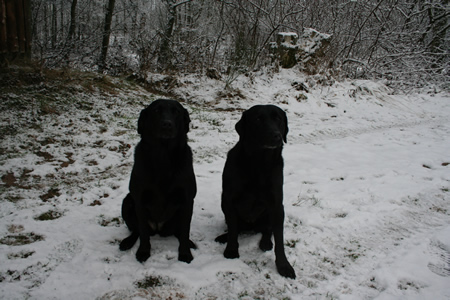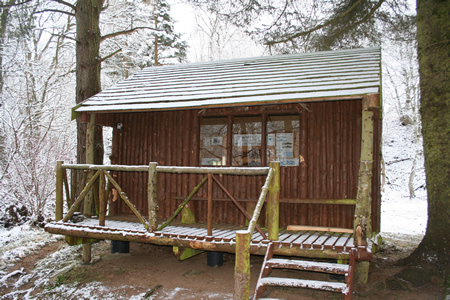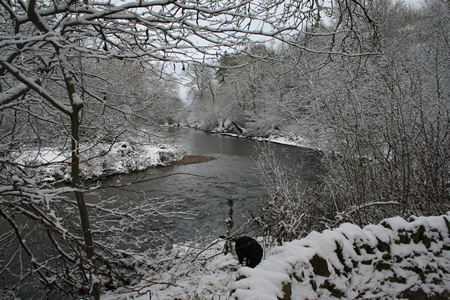These bulletin blogs represent news about Finavon and the South Esk, and my views as a riparian owner. They are not the views of any other organisation, nor are they designed to promote the interests of any individual or organisation other than Finavon Castle Water and factors affecting the fishery. Tony Andrews
The early part of the winter – up to about five days ago – was mild and wet. These were probably good conditions for kelts to exit the river although very few of these fish survive to enter the river and spawn again. Not much research has been undertaken into kelt survival in Scotland compared with rivers in Canada where there are so many kelt that a strange sport called ‘black fishing’ takes place in April and May each year, when large numbers of local anglers fish for kelt- on a 100% catch & release basis. I was told on a visit to the Mirimachi in New Brunswick in 2011 that kelt survival in that river is as high as 30%. In Scotland we think survival rates are about 5%. I expect most of the South Esk’s kelts to be moving downstream, and spawning should now be over.
Will Wells of Scottish Oak on the bridge at Red Brae during repairs following flood damage in December
Our two labradors, Tally and Tinca, are finding salmon remains dispersed far and wide in trees and in fields along the river banks. As the weather warms up these corpses will smell worse and the dogs will be banished to their kennels after a good swim until the pong has subsided. It’s all part of our riverside experience as the winter draws into its last phase!
Tally & Tinca after their disgusting feast of rotten kelt corpses
Speaking with Colin Gibb at Inshewan last week we discussed the likelihood of the odd fish having entered the middle river following the warm and high water of the winter up to last week. We agreed that some fish have probably got upstream of Brechin, but not in great numbers. My guess is that any fish that are in the river will be downstream of Justinhaugh Bailey bridge, and well worth a cast in the first days of the new season after the 16th of April.
Red Brae Hut was built in 1993 and has witnessed many a celebration of fine catches of salmon and sea trout over its twenty years. Sea trout fishermen have kipped on camp beds, parties from Austria, Japan, Spain, France and England have enjoyed feasts and long lunches. The wine has flowed, the crack has been great and our family has many many happy memories. The ghosts of the Red Brae hut are all benign, and its walls await the next round of stories and accounts of great fish caught or lost.
Apart from anticipation of the new season, there are some important issues for the South Esk. The second year of Marine Scotland’s radio tagging project should tell us more about where our spring salmon spawn and where juveniles grow into parr. Next week the Esk Board’s AGM takes place with elections and the prospect of a new chairman. The new season will reveal if sea trout numbers continue to recover and spring salmon stocks hold up . The river needs some better news and it would be good for its reputation if the Kinnaird beats and Cortachy & Downie Park have better catches of both salmon and sea trout than in 2012.
It will be interesting to see how the Dee performs after the encouraging number of early salmon caught on the Tay this week.



